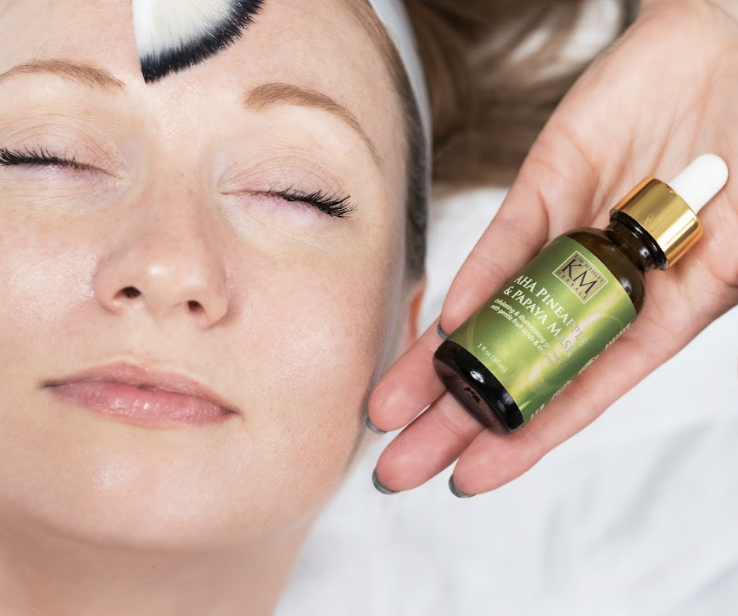Do you know how to treat acne?
Wait, don’t answer – it’s a trick question. You can’t answer that question, because you don’t have enough information. Acne doesn’t have a universal treatment. It’s not a one size fits all skin disorder and it certainly doesn’t have a single treatment option.
Can You Treat These 4 Acne Clients?
Over the past few years, we’ve worked with some of the country’s premier acne experts. We’ve called on these experts to share their expertise with our readers. These experts have provided us with their expert tips on treating specific acne in specific demographics of the client population.
Treating Acne In Teens
So many suffering from teen acne, look for solutions in drug stores. It’s even worse when they start doing web searches and click on the top links that are always paid for by mass-market corporations with massive advertising budgets. Many well-intentioned parents end up with home care for their teens suffering from acne from companies that are making unsubstantiated claims.
Learn how you can help teens with acne!
Treating Hormonal Acne
Acne has many causes, but the leading cause of hormone-related acne is an imbalance of androgen male hormones in the body. The hyperactivity of androgens triggers a slew of symptoms. Excess sebum, oil, and production from the sebaceous glands that pools on the surface of the skin and becomes a breeding ground for bacteria.
Colonization of Propionibacterium (P. acnes), the stagnant acne-causing bacteria, is opportunistic in its nature. P. acnes just stays put and awaits, and when conditions permit, it makes its way through the pores to attack, i.e., cause breakouts. Accumulation of dead skin cells. Final and extremely unpleasant symptom, and often even painful is the susceptibility to inflammation in the skin. The most common areas with the greatest severity where hormonal acne is found is along the jawline and sides of the face.
Other internal-driven triggers of acne flare-ups for women in their thirties include menstruation, ovulation, pregnancy, post-pregnancy, and stress. Stress is one factor that also negatively impacts overall well-being. When women experience stress, this raises cortisol hormone levels in the body, as a result, the immune system is activated. This is expressed on this skin in the form of inflammation, which at times can be very painful. On-going stress that is left unmanaged ultimately weakens the immune system, it can also lead to acne treatment resistance.
Learn how you can help with hormonal acne.

KM Herbals
AHA Pineapple & Papaya Mask
This product is incredible and an absolute must to add to every professional treatment room. This mask can be added to any facial seamlessly, for any skin type. It can be quickly intensified by adding steam, making extractions effortless. This multifunctional mask can also be utilized as a natural non-invasive peel. Because it is a non-grit exfoliant, it gently resurfaces the skin by utilizing natural botanicals and AHAs, allowing finishing products to penetrate deeply into the skin. As a skincare professional, a multiple-functional treatment product is a no-brainer!
Treating Acne in Skin of Color
As the esthetics and beauty industry continues to grow, our clientele and the skin conditions we face will also expand. According to the American Academy of Dermatology Association, acne is the most common skin condition in the United States affecting 50 million Americans across all ages annually.¹ In addition, we see more acne in people of color and adults. Treating acne in people of color is extremely important to understand as a licensed professional. No individual is the same and each client’s background is always different when it comes to their genetics, diet, lifestyle, and skincare habits. Despite the limitations, there are effective acne treatments and products available when treating acne in people of color. Therefore, I will be providing 5 tips to help you feel more confident when treating this skin type and disorder! Please note that throughout this article, I will be referring to dark skin types as multicultural skin, ethnic skin, or people of color (POC).
Before we dive into those tips, it is crucial to understand how skin and pigmentation work. Although melanogenesis is a large topic that deserves its own platform, I want to briefly touch on what our melanocytes and melanin do. Melanocytes are the mature cells in our body that form our melanin. Melanin is the pigment granules that not only give us our skin, eye, and hair color, but it actually protects us! When inflammation or trauma occurs (e.g. UV exposure, acne lesions, or a scrape), our melanocytes work to produce melanin to protect those areas of injury. In POC, there is more melanocyte activity and stimulation causing more brown spotting and discoloration; this is commonly known as post-inflammatory hyperpigmentation (PIH).³ Therefore, using harsh/invasive chemicals or modalities on darker skin types will only cause more inflammation and PIH which we do not want.
Learn more about treating acne in people of color.
Treating Sensitive Skin Acne
Treating sensitive skin acne clients is hard, but the combination of acne with sensitive skin can be very challenging. Burning, stinging, redness, peeling, and overall irritation are common for those with acne and sensitive skin. Products with key ingredients strong enough to fight bacteria, cleanse oil, and heal the skin while calming inflammation and sensitivities are needed. When dealing with acne-prone sensitive skin, the main focus usually is on barrier function and repair before targeting pimples and breakouts.
Learn more about treating acne in sensitive skin.

SilcSkin Silicone Pads
Treat Wrinkles Like Doctors Treat Scars
SilcSkin Eye pads use the same philosophy to treat wrinkles that doctors use to treat scars after surgery. SilcSkin Pads are specifically designed to help reduce the appearance of wrinkles, bags and crepiness under the eyes and the crow’s feet area. Made of 100% medical grade silicone, they contain no allergy causing latex, urethanes, or adhesives

